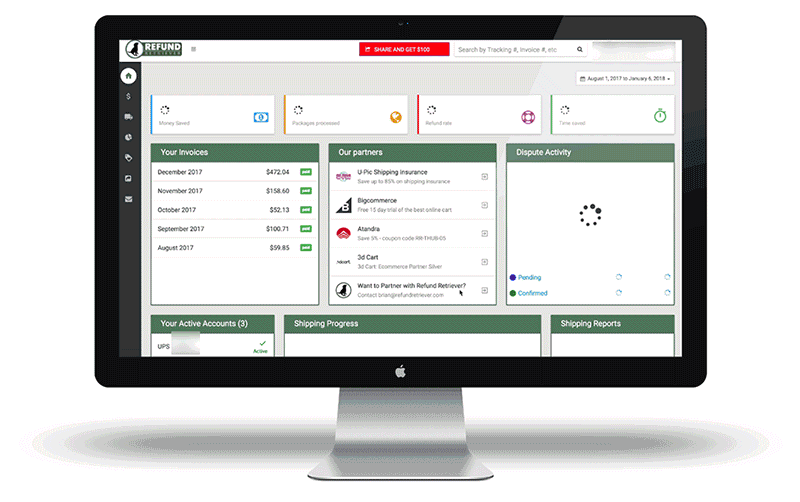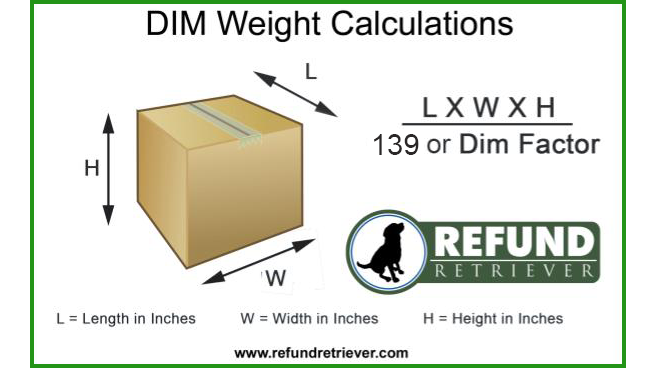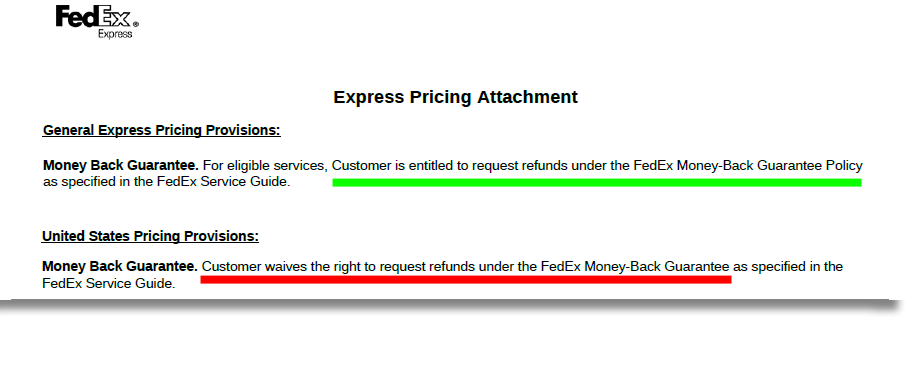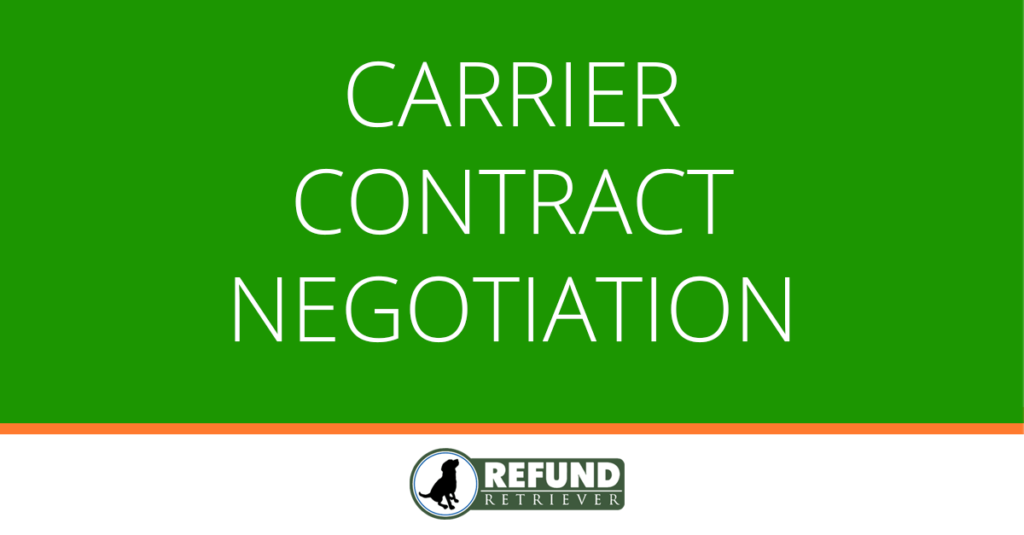Carrier contract negotiation is often a daunting task. Even the most seasoned shippers have trouble genuinely understanding the fine print of these complex carrier agreements. FedEx and UPS do not want to lower their rates for anyone. However, they know it’s necessary to keep their client’s business. Here are 10 tips to consider when going into your next contract negotiation.
Top Tips for Contract Negotiation
- 1. Bring in the competitor carrier – Multi-carrier strategy
- 2. Have your original contract ready
- 3. Know your own data
- 4. DIM – know if this is an issue
- 5. Keep your rights to refunds – No waiver
- 6. Accessorials/Surcharges
- 7. Benchmark Rates
- 8. Submit all RFPs and responses in a PDF
- 9. Quantify each proposed agreement
- 10. Review contract terms periodically
- Bonus Tip:
1. Bring in the competitor carrier – Multi-carrier strategy
FedEx and UPS know and understand that they are not the only players on the field. Use this to your advantage. Of course, it is less time-consuming to negotiate with one carrier rather than two or three. However, this method does not hold any advantage in capturing the best rates for your shipping needs. As a result, it is necessary to consider how including a multiple carrier strategy in your contract negotiation plan can bring on a range of benefits. These benefits include more favorable rates, enhanced transit time, increased pick-up and delivery locations, and more.
This process will strengthen your relationship with your current provider through detailed feedback and strategic messaging while creating a new relationship with the competitor carrier. Knowing what makes the carriers tick and motivates them to deliver on your requests is key.
2. Have your original contract ready
Ask your carrier representative for the most recent agreement and any addendums. Consequently, asking for your contract should give them a hint that a carrier contract negotiation will take place.
3. Know your own data
Remember, FedEx and UPS have full access to your shipping reports and data. They also know how much you ship each year and where the shipping dollars are applied. You need to get ahead of the carrier by establishing your baseline. Specifically, you will need to filter these essential data points:
- Yearly shipping volume: total spend with each carrier and individual service level
- Surcharge (accessorial) fee volume and total spend
- Dimensional Weight: package count and contracted divisor
- Zone and weight distribution
Furthermore, using shipping data in every stage of the UPS and FedEx carrier contract negotiation is KEY to understanding how specific changes in your contract will drive meaningful savings. Understanding what makes up your company’s parcel spend provides invaluable insight into a carrier rate negotiation.
4. DIM – know if this is an issue
UPS and FedEx increase shipping rates yearly. Rates will be based on the size of the package, known as Dimensional Weight Pricing, or DIM Weight. Dimensional (DIM) weight pricing is the carriers’ way of encouraging parcel shippers to optimize box sizes. This prevents wasted space inside the boxes, which wastes space in their trucks. Carriers want to fill their trucks with as many packages as possible. Consider asking for a dimensional weight waiver or a higher standard dimensional divisor to combat the cost during your next carrier contract negotiation.
5. Keep your rights to refunds – No waiver
As you know, you are entitled to a full refund if the carrier fails to deliver the package in the promised time. Never sign away your right to the money-back guarantee during a carrier contract negotiation. Regardless of how hefty the discount offered may seem, hold the shipping carriers accountable for their performance by monitoring your packages and claiming refunds when applicable. Late package refund auditing is an easy way to reduce your shipping overhead while also strengthening your shipping efficiency. Explore more about parcel auditing here.
6. Accessorials/Surcharges
A simple look at your shipping invoices will give you an idea of how many additional components your shipping bills contain. We recommend that you identify and calculate your TOP 20 accessorial fees, specifically focusing on:
- Total number of charges
- The average cost for each charge
- Total costs for each accessorial fee
- Accessorial fee price increases: estimate next year’s projected cost. (Next year’s cost is very important to know when renegotiating your shipping contracts)
To reiterate, there are several surcharges within your shipping invoices, and these fees add up and have a significant role in your overall shipping spend. FedEx and UPS have their own set of surcharges, and each surcharge has its terms and conditions.
7. Benchmark Rates
To accomplish a successful carrier contract negotiation with UPS and FedEx, you will need to determine ideal discounts and incentives; this is where benchmarking comes in handy. With Refund Retriever’s benchmarking report, you can gain access to realistic rates based on similar-sized shippers. This report will allow you to project feasible savings. Your best option is to partner with a third-party company to perform this type of analysis and cost modeling. This insight provides you with the necessary information and tools to determine what the market will likely yield for your company in savings.
8. Submit all RFPs and responses in a PDF
When it’s time to create the RFP, specify your desired rates for each zone and corresponding weight range. Don’t request additional discounts for rarely used services. Determine what, if any, accessorial fees you would like to receive a discount on. Include dates for each response so that each request has a documented chronological history. Then, send the RFPs to each carrier.
9. Quantify each proposed agreement
You will receive multiple pricing proposals from each carrier in a successful parcel negotiation process. It is essential to thoroughly examine every proposal to determine the real impact on your operations and spending. Knowing how each proposal will affect your average cost per package, per pound, per zone, and per service level are all necessary. Most importantly, calculate the annual savings (% and $) the proposal provides to your company and do not rely on what the carrier claims it provides. Once you receive the new contract, you will want to regularly quantify the changes to ensure that you turn discount percentages into dollar bills each year.
10. Review contract terms periodically
We advise that you renegotiate at least two months before the expiration of your discounts. Keep track of these dates! If you let your discounts expire and continue to ship, your shipping costs will rise significantly. Periodically review your contract and try to find a balance between you and the shipping carrier where you can both benefit from each other’s business. Frequently review factors like:
- The number of packages you send.
- How often does the shipping carrier increase rates, and how has it affected your business?
- Finally, other areas that you feel need more discussion.
If you do not keep yourself updated on changes by your carrier or negotiate your contract accordingly, you may outgrow your contracts and end up paying too much.
Bonus Tip:
Use a project management tool to keep you on track and keep other team members informed throughout the carrier contract negotiation process.




